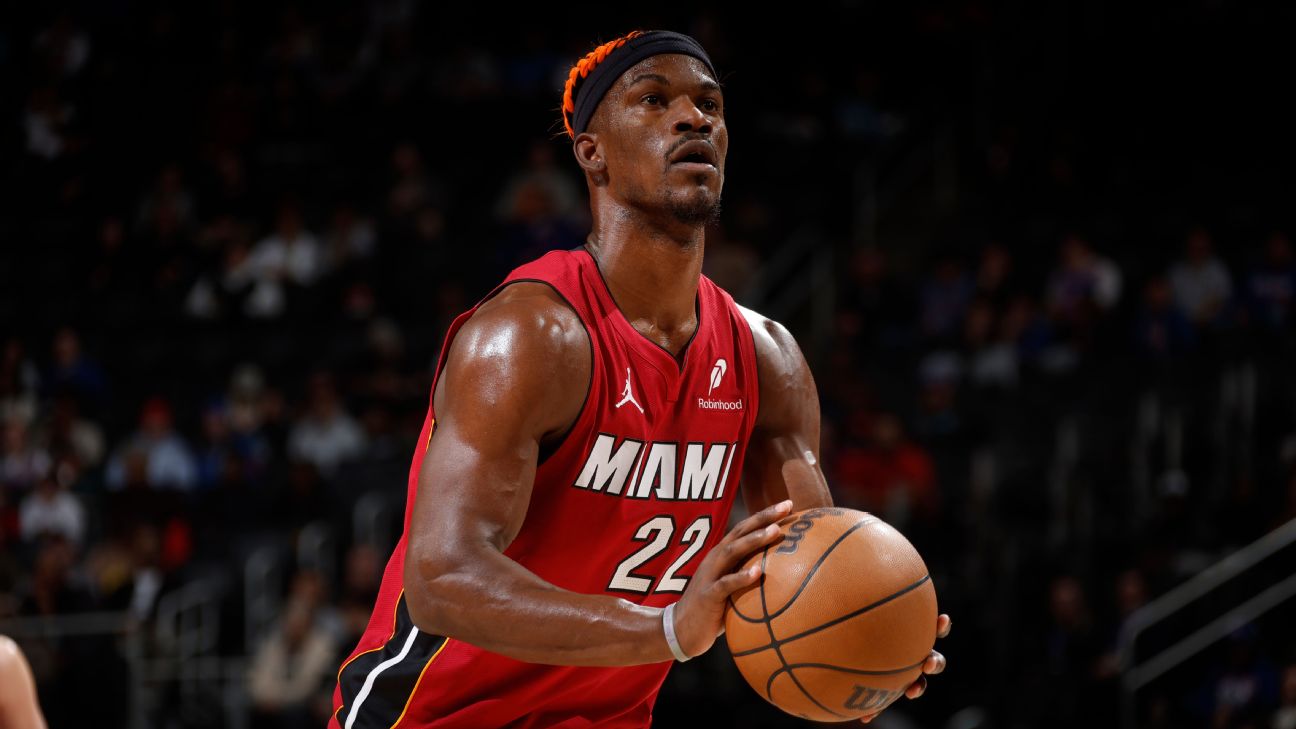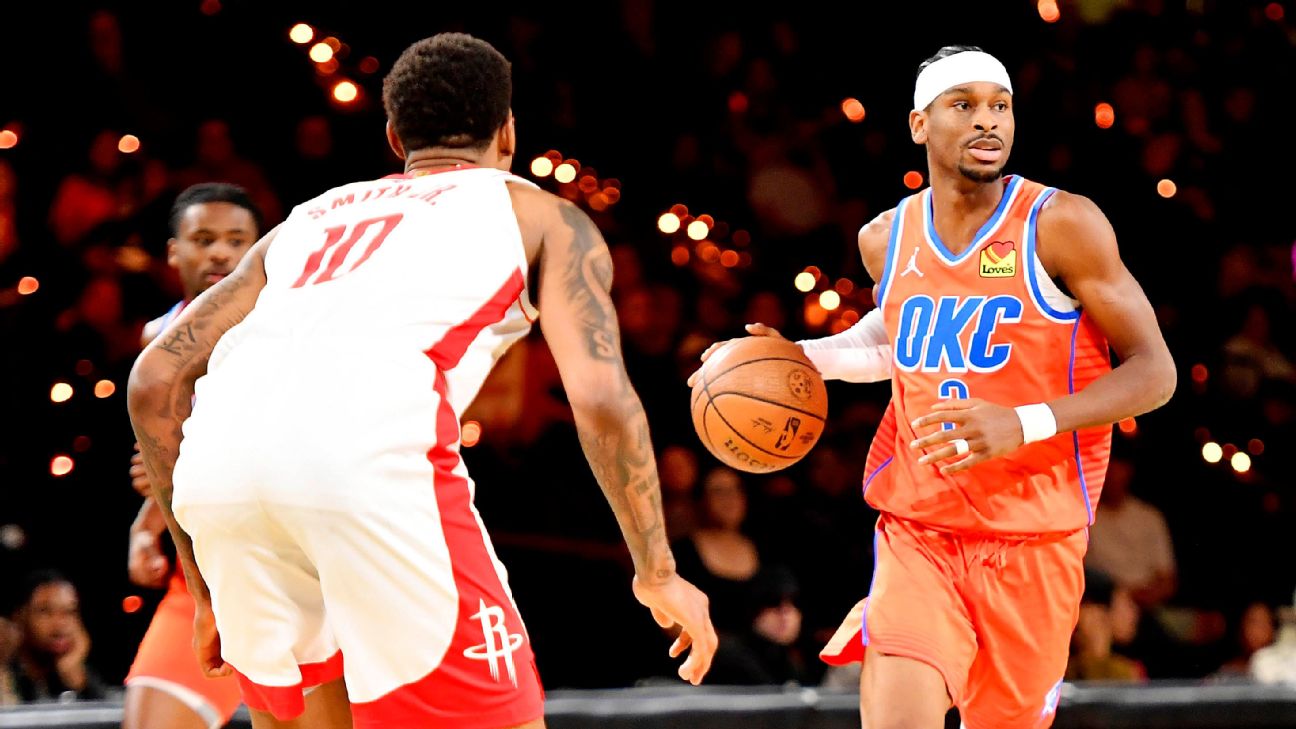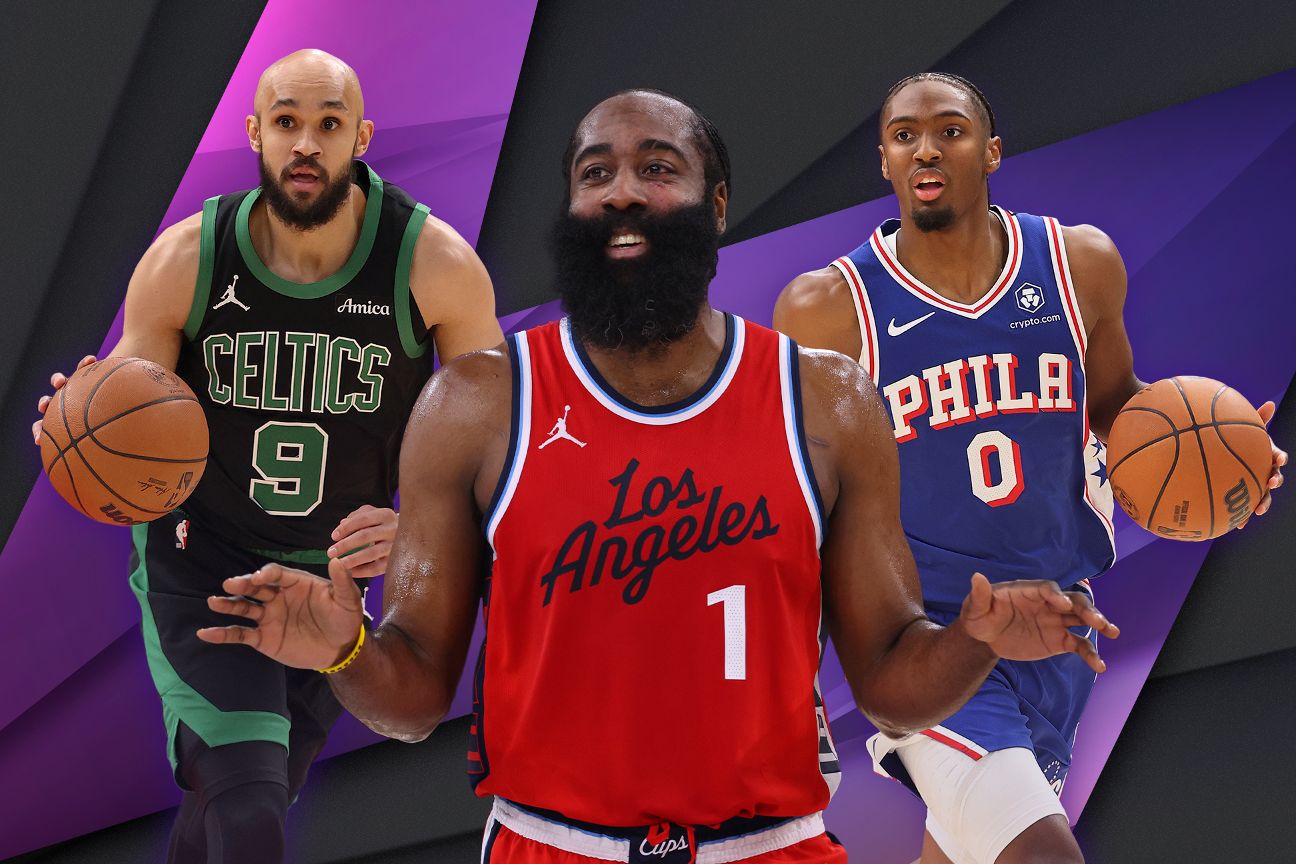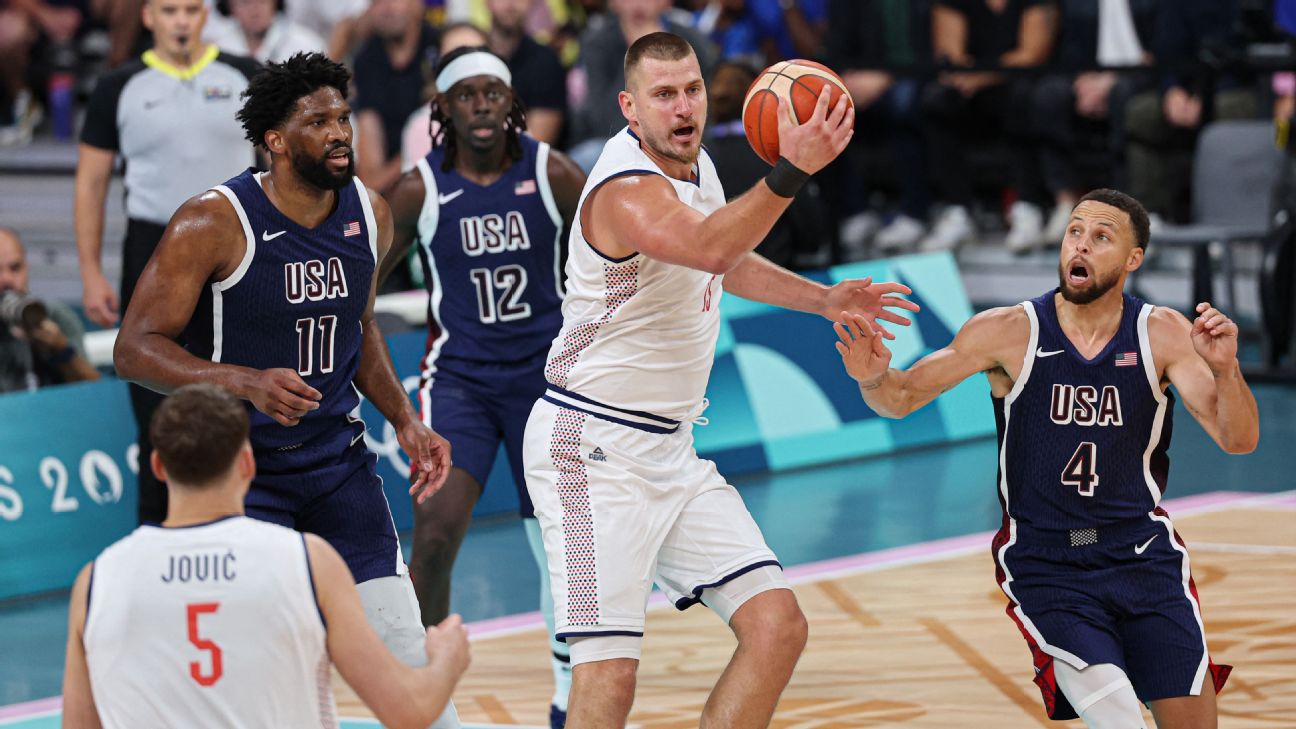Trades featuring NBA stars rarely come out of the blue. There is often a long process that leads up to one — whether it unfolds publicly or privately.
Last spring, Miami Heat president Pat Riley indicated the team would wait until summer 2025 to address extending star Jimmy Butler’s contract. That meant no extension before the current season. In return, Butler made it known his intention was to bypass his player option for the 2025-26 campaign.
So, here we have a star player with no contract in place after the current season, with both the team and the player passing on chances to extend. Additionally, the Heat have indicated they’d be willing to hear trade offers for Butler.
Put all that together and it’s a classic situation that leads to a trade. That’s why Butler has been the star much of the league has been watching over the course of the fall.
While there are a few other All-Star-level players who could find themselves on the market — including Brandon Ingram and Zach LaVine — Butler has the most star power. If there’s a team in the market for a difference-maker, Butler has to be on their list. And that is why Butler appears to be the early centerpiece of trade season. — Brian Windhorst
Jump to a section:
Where Butler and Miami stand
Deals for DAL, GS, HOU, PHX
Wild-card teams with trade paths

.
Butler is open to trade destinations such as the Phoenix Suns, Golden State Warriors, Dallas Mavericks and Houston Rockets, league sources said.
Butler has a $48.8 million salary this season and a $52.4 million player option next year. However, sources told Charania that Butler will decline the option and become a free agent if he is on the Heat roster once the season ends.
If Butler were traded, he would be eligible to sign a two-year $111 million extension with his new team.
Free agency could present a challenge for Butler
Butler, 35, does not fit the roster timeline of the Brooklyn Nets, the only team that projects to have more than $40 million in cap space.
Butler could opt in to his contract in the offseason and ask to be traded, but that would require cooperation from the Heat.
There is also a chance of Butler declining his option and Miami signing and then trading him to a team that does not have room. This scenario is how Butler was traded from Philadelphia to Miami in the 2019 offseason. But that was under the 2017 collective bargaining agreement when roster building was less restrictive.
One scenario that not should not be overlooked is what the LA Clippers did this past summer.
Instead of trading Paul George for contracts that would tie up their flexibility, the Clippers let George walk for nothing.
The Clippers were able to use the George savings and sign James Harden, Derrick Jones Jr., Kris Dunn, Nicolas Batum, Kevin Porter Jr. and Mo Bamba. They also signed Terance Mann and Ivica Zubac to contract extensions.
The Heat would be nearly $50 million below the luxury tax line if Butler opts out of his contract and signs elsewhere.
Butler’s trade market is even more complicated
Three out of the four teams on Butler’s preferred list — Dallas, Golden State and Phoenix — would need to trade a quarter of their roster. The Suns meanwhile, would need to have Bradley Beal waive his no trade clause. Sources told ESPN that the Heat have no desire to take back the $110 million owed to Beal and that Phoenix would need to find a third team to get involved to make a deal work. The Warriors and Mavericks would also likely need to find a third or fourth team to reroute some of the contracts sent out. The Heat also are not allowed to take back more salary, because they are an apron team.
On the court, can Miami trade Butler and remain competitive in the Eastern Conference without sacrificing future financial flexibility? Butler is on pace to play his most games since 2018-19 and is shooting a career-high 55.7% from the field. — Bobby Marks
, PJ Washington and Daniel Gafford in consecutive trade deadlines.
Trading for Butler, however, would present GM Nico Harrison with his biggest challenge.
Because Dallas overhauled their roster once again, adding Klay Thompson, Naji Marshall and Quentin Grimes in the offseason, they are not allowed to take back more than $526K of salary in a trade than what is sent out.
The Mavericks do have five players earning between $8.6 million and $15.5 million, but because of the size of Butler’s salary and the apron restriction, Dallas would need to send out a minimum of three players. — Marks
One trade that works
Mavericks get: Jimmy Butler
Heat get: Brandon Ingram, Naji Marshall, Daniel Theis
Pelicans get: Daniel Gafford, Dwight Powell, Klay Thompson
Pistons get: Maxi Kleber, 2025 DAL 1 (top-14 protected)
This is the most complicated trade, requiring four teams to allow the three with tax or apron concerns to avoid adding salary. The upshot here is Dallas turning role players into Butler, Miami getting back Ingram as a younger — and possibly cheaper — replacement, and New Orleans saving money and rebalancing its rotation with a starting center and one of the great shooters in NBA history. Detroit uses its cap space to take on Kleber’s contract, which runs through 2025-26. — Kevin Pelton
![]() Golden State Warriors
Golden State Warriors
The Warriors are in a similar position to Dallas. Golden State added Buddy Hield, Kyle Anderson and De’Anthony Melton in the offseason, thus triggering the first apron hard cap. (Melton was then sent to Brooklyn for Dennis Schroder.) Because of the restriction, Golden State is not allowed to take back more than $330K in salary sent.
The Warriors do have the contracts to make a Butler trade and still remain below the hard cap. Including Andrew Wiggins’ $26.3 million salary, Golden State has seven players earning between $5.8 million to $13 million. Four of those players — Schroder, Gary Payton II, Kevon Looney and Jonathan Kuminga — are on expiring contracts. To take back the Butler salary, the Warriors would need to send out at least four players and remain under the first apron after their roster is filled out. — Marks
One trade that works
Warriors get: Jimmy Butler
Heat get: Kyle Anderson, Gary Payton II, Andrew Wiggins, 2025 Warriors first-round pick (top-4 protected), 2028 Warriors first-round pick
Pistons get: Kevon Looney, 2026 Lakers second-round pick (via Heat)
Golden State can choose from a variety of trade options, including moving Jonathan Kuminga and newly extended Moses Moody. The Warriors could also choose to deal the recently acquired Schroder, so long as a deal is completed at the trade deadline or the day before. From a financial standpoint, Miami probably would be best off prioritizing shorter contracts around Wiggins as a Butler replacement. That means most of the value to the Heat here is in two first-round picks, though they have to give up a second-rounder to shed Looney’s salary and make this trade legal. — Pelton
![]() Houston Rockets
Houston Rockets
Houston best checks the boxes of financial flexibility, tradable contracts and draft assets of Butler’s preferred teams. Rockets GM Rafael Stone, however, said he anticipates no changes to the roster.
“We definitely want this group to be as good as it can be this year and then we’ll evaluate things at the end of the year,” Stone told SiriusXM radio last week. “But the hope is very much that this core group can lead us to where we want to go and that — from a transactional perspective — we’re largely done.” But what happens if Stone can acquire Butler without giving up any young players? — Marks
One trade that works
Rockets get: Jimmy Butler
Heat get: Steven Adams, Dillon Brooks, Jeff Green, 2027 first-round pick (worse of Brooklyn and Houston), 2029 first-round pick (second-best of Dallas, Houston and Phoenix)
In terms of money, this is the cleanest fit for Miami, which would cut its salary about $6 million this season and even more in 2025-26, when Adams and Green are both free agents. That leaves the Heat with Brooks as a defensive-minded replacement for Butler, plus the two extra first-round picks. Houston would upgrade from Brooks to Butler without giving up any other core players, albeit at the expense of future flexibility. — Pelton
![]() Phoenix Suns
Phoenix Suns
The Suns are over the second apron and are not allowed to aggregate the contracts of Grayson Allen, Jusuf Nurkic and Josh Okogie in a Butler trade. Because of this restriction, the only contract that matches is Bradley Beal (the Suns are not trading Kevin Durant or Devin Booker).
The Suns trading for Butler comes down to two things:
-
Beal would need to waive his no-trade clause, and
-
Miami would need to take back the $110 million owed to Beal after this season or find a third team willing to take on Beal
The money left on the Beal contract, plus the Suns’ lack of draft assets (they have only a 2031 first-round pick to trade) make a trade to Phoenix highly unlikely.
Instead of taking on the money owed to Beal, the Heat would be better off extending Butler or working out a trade on their terms this summer. — Marks
One trade that works
Suns get: Jimmy Butler
Heat get: Bradley Beal, 2031 Suns first-round pick, 2031 Suns second-round pick, 2026 and 2031 Nuggets second-round picks (via Suns)
76ers get: Alec Burks
This is basically everything Phoenix can trade for Butler. Burks must be included so Miami doesn’t add salary in this trade and trigger a hard cap at the first apron. The Suns probably would rather not add substantially to their tax bill to take back Burks, who could help Philadelphia with veteran guards Eric Gordon and Kyle Lowry in and out of the 76ers’ rotation. — Pelton
Denver getting involved in trading for Butler comes down to how much it values 26-year old wing Michael Porter Jr.
Because the Nuggets cannot trade Aaron Gordon and Jamal Murray (both signed extensions in the offseason), Porter’s $35.9 million salary is their biggest trade chip. The lone draft asset Denver has is a pick swap in 2031.
Porter has two years remaining ($38.3 and $40.8 million) after this season and is averaging 18.9 points, second highest on the team behind Nikola Jokic.
The Nuggets are $5.1 million below the second apron and are not allowed to take back more money in a trade. They are allowed to aggregate contracts if they remain below the threshold. — Marks
One trade that works
Nuggets get: Jimmy Butler
Heat get: Zeke Nnaji, Michael Porter Jr., 2026 first-round swap, 2031 first-round swap
Pistons get: Dario Saric
Note: The Nuggets can swap their 2026 first, but only if their 2025 first to Denver is conveyed this year.
Denver has no tradable draft picks and could only offer Miami swaps to go from Butler to Porter and take on the contract of Nnaji, who has played just 79 total minutes this season and is signed through 2027-28. That sounds like a hard sell to the Heat. — Pelton
![]() San Antonio Spurs
San Antonio Spurs
The Spurs are competing for a spot in the play-in, and trading for Butler accelerates the timeline around Victor Wembanyama. It could also stunt the development of the third-youngest roster in the NBA.
San Antonio has the contracts, draft picks and is well positioned financially to take back Butler in a trade. Because it is well below the apron, San Antonio would only need to send out $40 million in contracts. Not including Wembanyama, the Spurs have seven players earning between $9 million and $30 million.
Over the next seven years, the Spurs have 12 first-rounders and 19 second-rounders available to trade. — Marks
One trade that works
Spurs get: Jimmy Butler
Heat get: Harrison Barnes, Malaki Branham, Keldon Johnson, 2025 first-round pick (worst of Atlanta, Charlotte top-14 protected, Chicago top-10 protected and San Antonio)
Since Miami likely would not be interested in taking back Zach Collins’ contract, San Antonio probably would have to include both Barnes and Johnson in any Butler trade offer. It’s possible both could start at forward for the Heat, and Johnson (age 25) could be a long-term contributor in Miami. The Spurs probably don’t need to include multiple first-round picks because the one they’re sending is likely to be in the teens in June’s draft. — Pelton



